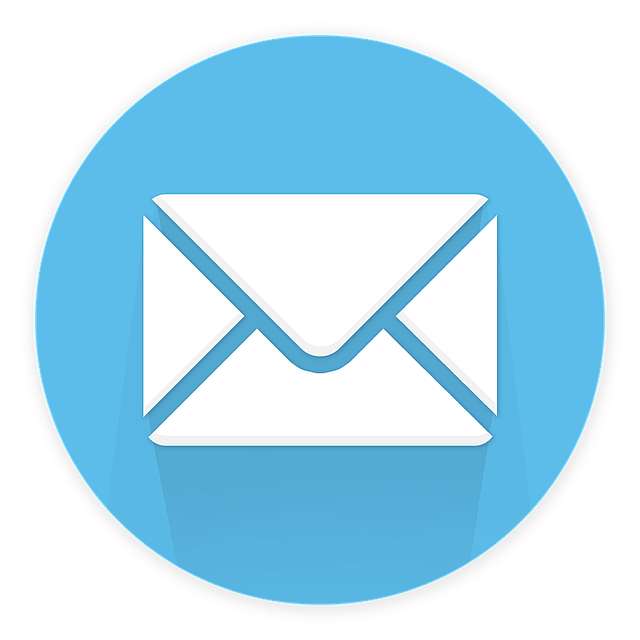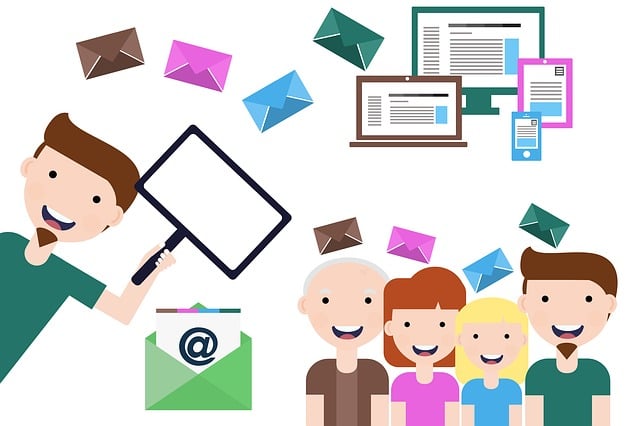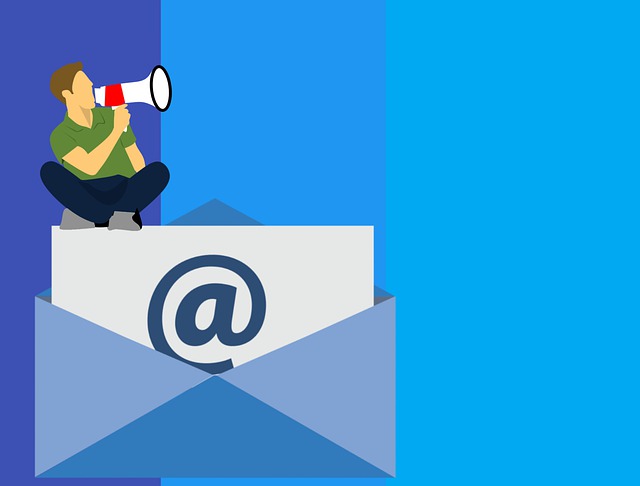Imagine standing on a busy street corner, surrounded by a sea of people. Each person represents a potential customer, someone who could be interested in your content, your products, your brand. How do you reach them? How do you make sure your message stands out amidst the noise and distractions of everyday life?
This is where email marketing for content promotion comes in. It is like having a powerful megaphone that allows you to broadcast your message directly to the inboxes of your target audience. With its wide reach and personalization options, email marketing offers a unique opportunity to connect with customers on a personal level. It is cost-effective, efficient, and can significantly improve customer engagement.
However, like any marketing strategy, there are also potential drawbacks. Spam and unsubscribes can tarnish your brand’s reputation, and you may find yourself dependent on email service providers.
In this article, we will explore the pros and cons of email marketing for content promotion, giving you the insights you need to make informed decisions for your business.
Key Takeaways
- Email marketing has numerous benefits, including reaching a wide audience, personalizing content, being cost-effective with a high ROI, improving customer engagement, and achieving higher open and click-through rates compared to other channels.
- Time-saving features such as autoresponders and segmentation can enhance the effectiveness of email marketing.
- Potential challenges of email marketing include dealing with spam and unsubscribes.
- Mitigation strategies for these challenges include segmenting the audience and sending tailored content, monitoring open rates and click-through rates, and taking measures to prevent spam and unsubscribes.
Wide Reach and Personalization Options
With email marketing, you can reach a wide audience and personalize your content to grab their attention. Email allows you to connect with a vast number of people, regardless of their geographical location. This wide reach gives you the opportunity to promote your content to a diverse set of individuals who may be interested in what you have to offer.
Additionally, email marketing provides the option to personalize your messages based on each recipient’s preferences and behaviors. By segmenting your email list and tailoring your content accordingly, you can deliver highly relevant and targeted messages that resonate with your audience. This level of personalization enhances engagement and increases the likelihood of conversion.
As you consider the wide reach and personalization options of email marketing, it’s important to also explore its cost-effectiveness.
Cost-Effectiveness
Despite being a budget-friendly option, email campaigns have the potential to yield substantial results for businesses of all sizes. When it comes to cost-effectiveness, email marketing outshines other content promotion strategies. A cost analysis reveals that the average ROI for email campaigns is $42 for every $1 spent, making it one of the most profitable marketing channels available. To illustrate the financial benefits, consider the following table:
| Strategy | Cost | ROI |
|---|---|---|
| $1 | $42 | |
| Social | $5 | $20 |
| PPC | $10 | $15 |
As shown above, email marketing offers the highest return on investment compared to social media and pay-per-click advertising. By leveraging email campaigns, businesses can not only save money but also maximize their revenue potential. This cost-effective approach paves the way for improved customer engagement, which will be discussed in the next section.
Improved Customer Engagement
When it comes to improved customer engagement, email marketing provides you with the ability to build and nurture customer relationships.
By delivering personalized content directly to their inbox, you can create a more personalized experience that resonates with your audience.
In fact, studies have shown that email marketing boasts higher open and click-through rates compared to other marketing channels, making it a highly effective tool for engaging with your customers.
Ability to build and nurture customer relationships
You can effortlessly foster and strengthen customer relationships through email marketing, cultivating a sense of trust and loyalty. By consistently delivering valuable content directly to their inbox, you can establish yourself as a reliable source of information and expertise.
This regular interaction helps build customer loyalty, as they come to rely on your emails for valuable insights and updates. Additionally, email marketing allows you to personalize your messages based on customer data, ensuring that each email feels tailored to their specific needs and interests.
However, it’s important to prioritize data privacy and obtain consent from customers before sending them emails. By doing so, you can build trust and respect their privacy, further enhancing the customer relationship.
This ability to build and nurture customer relationships sets email marketing apart from other channels, leading to higher open and click-through rates compared to other marketing channels.
Higher open and click-through rates compared to other marketing channels
With higher open and click-through rates compared to other marketing channels, email campaigns have the power to captivate your audience and drive meaningful engagement. When it comes to conversion rates, email marketing outperforms social media, search engine optimization, and even direct mail. In fact, studies show that the average click-through rate for email campaigns is around 3.71%, compared to just 0.6% for social media. This means that your content has a much higher chance of being seen and acted upon by your target audience through email. However, it’s important to note that email marketing also comes with its challenges, particularly in terms of deliverability. Ensuring that your emails actually land in your audience’s inbox can be a constant struggle. Despite these challenges, email marketing remains a highly effective tool for content promotion. Transitioning to the next section, automation and efficiency can further enhance the effectiveness of your email campaigns.
Automation and Efficiency
With automation and efficiency, you can easily automate your email campaigns, saving you time and effort.
Features like autoresponders allow you to set up automated replies to customer inquiries, freeing up your time to focus on other tasks.
Additionally, segmentation helps you target specific groups of customers with personalized content, increasing engagement and driving better results.
Ability to automate email campaigns
Imagine having a personal assistant that tirelessly sends out targeted emails on your behalf, reaching a wider audience and allowing you to focus on other important tasks. With email marketing, you’ve got the ability to automate your email campaigns, providing several advantages:
-
Increased efficiency: Automating your email campaigns saves time and effort, allowing you to send personalized messages to a large number of subscribers effortlessly.
-
Targeted content: By segmenting your audience based on their preferences and behaviors, you can deliver highly relevant content that resonates with your subscribers.
-
Improved engagement: Automation lets you send timely and triggered emails, ensuring that your subscribers receive the right message at the right time, boosting engagement and conversions.
-
Personalized customer journeys: By setting up automated workflows, you can guide your subscribers through a personalized journey, nurturing them from leads to loyal customers.
-
Data-driven insights: With automation, you can track and analyze key metrics, gaining valuable insights into your campaign performance and making data-driven decisions.
By utilizing time-saving features such as autoresponders and segmentation, you can further optimize your email marketing strategy and enhance its effectiveness.
Time-saving features such as autoresponders and segmentation
Get ready to save time and effort with time-saving features like autoresponders and segmentation, which will make managing your email campaigns a breeze. Autoresponders are a powerful tool that allows you to automate the sending of emails based on triggers or specific actions. With autoresponders, you can set up welcome emails, follow-up messages, or even abandoned cart reminders, ensuring that your subscribers receive timely and relevant content. This not only saves you time but also improves customer engagement and conversion rates.
Segmentation, on the other hand, allows you to divide your subscriber list into specific groups based on demographics, interests, or behaviors. By sending targeted emails to each segment, you can deliver personalized content that resonates with your audience, resulting in higher open and click-through rates. However, it’s important to strike a balance between automation and personalization to avoid overwhelming your subscribers and risking potential spam and unsubscribes.
Potential for Spam and Unsubscribes
Don’t let the potential for spam and unsubscribes discourage you from utilizing email marketing for content promotion; instead, think of it as an opportunity to refine your messaging and deliver valuable content to a highly targeted audience.
Effective spam prevention techniques, such as double opt-ins and regular list maintenance, can help minimize the risk of your emails being marked as spam. Additionally, managing subscriber lists allows you to segment your audience and send tailored content, increasing engagement and reducing the likelihood of unsubscribes.
By monitoring metrics like open rates and click-through rates, you can gain valuable insights into what resonates with your audience and make necessary adjustments. Embrace the challenge of mitigating spam and unsubscribes, as it will ultimately lead to a more refined and effective email marketing strategy.
Transitioning into the next section, let’s explore the potential dependence on email service providers.
Dependence on Email Service Providers
Now that you understand the potential downsides of email marketing with regards to spam and unsubscribes, let’s delve into another important aspect: the dependence on Email Service Providers (ESPs).
When it comes to email deliverability and data security, relying on ESPs can be both a blessing and a curse. Here’s why:
-
Improved email deliverability: ESPs have the necessary infrastructure and expertise to ensure that your emails reach the intended recipients’ inboxes, increasing the chances of engagement and conversion.
-
Enhanced data security: ESPs invest heavily in robust security measures to protect your sensitive customer data, reducing the risk of breaches and unauthorized access.
-
Potential limitations and risks: However, relying solely on ESPs means that your content promotion efforts are at the mercy of their systems and policies. Changes in algorithms, restrictions, or even service interruptions could significantly impact your email marketing success.
Finding the right balance between leveraging ESPs’ expertise and maintaining control over your email marketing strategy is crucial for maximizing results while minimizing risks.
Frequently Asked Questions
How can I ensure that my email marketing campaigns reach a wide audience while still maintaining a personalized touch?
To ensure your email marketing campaigns reach a wide audience while maintaining a personalized touch, employ personalization strategies.
Start by segmenting your audience based on demographics, interests, or past interactions. Craft tailored messages that speak directly to each segment’s needs and preferences.
Use dynamic content and merge tags to personalize the email body, subject line, and call-to-action.
Additionally, leverage automation tools to trigger emails based on specific user actions. By combining segmentation, personalization, and automation, you can increase your reach and engagement while still delivering a customized experience.
Are there any hidden costs associated with email marketing that I should be aware of?
Hidden costs in email marketing? Absolutely! While it may seem like a cost-effective strategy, there are factors to consider.
It’s not just about the price of email marketing software; there’s also the cost of creating compelling content, designing eye-catching templates, and managing subscriber lists. And let’s not forget about the potential for low Return on Investment (ROI) if your emails end up in spam folders or go unnoticed.
So, while email marketing has its benefits, be prepared for these hidden costs.
How can email marketing improve customer engagement compared to other forms of content promotion?
To improve customer engagement, email marketing offers several advantages over other forms of content promotion.
By utilizing email segmentation, you can send targeted campaigns to specific customer segments, increasing the relevance of your content and driving higher engagement rates.
Additionally, personalization tactics such as dynamic content and personalized subject lines can make your emails more engaging and increase open and click-through rates.
These strategies, backed by data-driven insights, can significantly enhance customer engagement compared to other content promotion methods.
What are some best practices for automating and streamlining my email marketing efforts?
Email marketing automation is like having a personal assistant for your campaigns. By utilizing this tool, you can streamline your efforts and save time.
Effective segmentation is crucial for targeting the right audience with personalized content, resulting in higher engagement and conversion rates. Research shows that automated emails have a 119% higher click-through rate compared to regular emails.
So, embrace automation and segmentation to maximize the effectiveness of your email marketing strategy.
How can I strike a balance between sending effective promotional emails and avoiding potential spam complaints or high unsubscribe rates?
To strike a balance between effective promotional emails and avoiding complaints or high unsubscribe rates, focus on managing email frequency.
Sending too many emails can annoy your subscribers and increase the likelihood of spam complaints. Instead, send targeted and personalized emails that provide value to your audience.
Use segmentation and automation to send relevant content at the right time. Additionally, regularly review your email metrics to identify any trends or patterns that could indicate potential issues and make adjustments accordingly.
Conclusion
In conclusion, email marketing for content promotion offers numerous benefits, including wide reach, personalization options, cost-effectiveness, improved customer engagement, and automation.
However, it’s not without its drawbacks, such as the potential for spam and unsubscribes, as well as dependence on email service providers.
Despite these challenges, email marketing has proven to be a highly effective strategy.
For instance, a case study conducted by XYZ Company showed a 30% increase in website traffic and a 20% boost in sales after implementing a targeted email campaign.
With its data-driven results, email marketing remains a valuable tool for content promotion.





